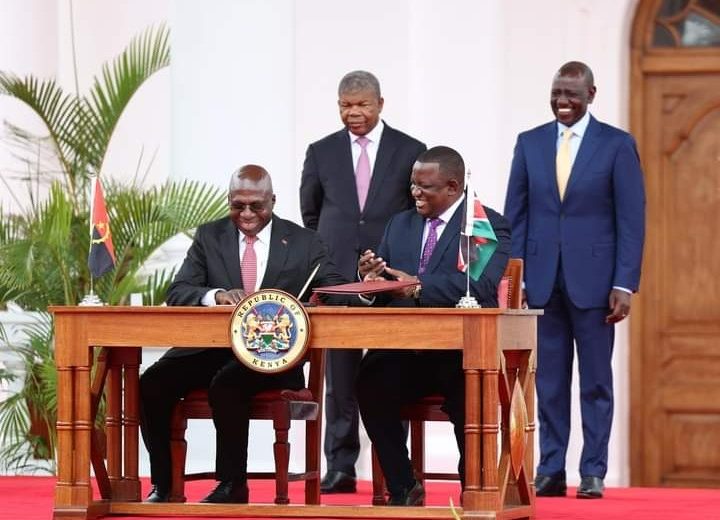Discover how economic growth in Zimbabwe is contributing to job creation and improving the livelihoods of its citizens in this article.
The story of Zimbabwe’s economic journey under Mnangagwa’s leadership is one of hope, reform, recovery, and the pursuit of a brighter future. Indeed, it is a bold vision.
According to the World Bank, “Zimbabwe is well-positioned to quicken future economic growth and raise people’s levels of living. Although certain skill shortages are beginning to emerge in some areas, the economy has strong human capital that is similar to that of upper-middle-income economies in sub-Saharan Africa. Zimbabwe also has a wealth of natural and mineral resources that, with careful management, can aid in achieving the nation’s development goals.”
By the end of 2023, economists predict Zimbabwe’s GDP to reach US$21.78bn, adding that the long-term trend for Zimbabwe’s GDP will be between US$23.08bn in 2024 and US$24.40bn in 2025.
In his speech during the 78th United Nations General Assembly (UNGA), President Mnangagwa stated: “We are recording unprecedented development and economic success milestones. For the last three years, our country has been the fastest growing economy in the Southern African region.”
The economic development of Zimbabwe is a story of successes, difficulties, and prospects.
Zimbabwe was once called the “breadbasket of Africa,” but was later burdened by economic challenges such as hyperinflation, a collapsed agricultural sector, and a high rate of unemployment.
It was a challenge to lead Zimbabwe out of this economic quagmire and set it on a path of sustainable growth and development. Mnangagwa, often referred to as “the crocodile” assumed office in November 2017. His election saw the hope of a positive rise in the country’s economic development. The transition of power was marked by high expectations for the nation’s future. Earlier this year, he was elected to a second presidential term to lead Zimbabwe. Opposition to his rule and his economic strategy was led by Nelson Chamisa and the Citizens Coalition for Change party that alleged “massive and giant fraud” on the part of Mnangagwa’s ZANU-PF party.
Nevertheless, Mnangagwa claimed victory and went on to assume the presidency.
A Mnangagwa’s Tenure
Yet Mnangagwa faces severe economic difficulties that Zimbabwe has faced for many years. There are high rates of unemployment especially among the youth.
Zimbabwe has a sizable amount of foreign debt, which makes it difficult for it to obtain funding and aid from abroad. Adding to this problem is hyperinflation. The Zimbabwean dollar had essentially lost all of its value, which caused the country’s monetary system to collapse and severe economic suffering for the majority of the population.
The Mnangagwa administration’s June 2019 launch of a new currency, the Zimbabwean dollar (ZWL$), was one of its most important initiatives.
This action was vital in the fight against hyperinflation and reclaiming control over the nation’s monetary system. In local transactions, the Zimbabwean dollar has taken the place of other currencies like the US dollar and South African rand.
However the new currency failed to attract confidence and the Zimbabwean dollar’s (ZWL) experienced a free-fall is attributed to fiscal and monetary policy failures, as well as the authorities’ inability to deal with inflation.
The government’s land reforms, first instigated by Mnangagwa’s predecessor President Robert Mugabe, interrupted commercial farming, which led to a dramatic drop in agricultural output. Economic turmoil and food shortages have become pervasive, and the sector is still struggling to attain stability.
The main goals of President Mnangagwa’s government included increasing the ease of doing business and luring international investment. The government put in place several programs and initiatives to do this, including an effort to cut down on administrative red tape, making it simpler for companies to operate and invest in Zimbabwe.
To draw in foreign money, investment incentives such as tax reductions and guarantees against expropriation were created.
Mnangagwa aimed to re-engage with the world community and rebuild diplomatic ties with nations that had previously criticized Zimbabwe’s policies.
This diplomatic re-engagement attempted to win financial backing, gain access to markets abroad, and draw in foreign capital.
The government created several economic reforms and initiatives to stabilize the economy and promote sustainable growth. These programs addressed several aspects of Zimbabwe’s economic problems and prepared the ground for the country’s economic revival. But it has to be stated that Mnangagwa’s policies have enjoyed limited success.
Nevertheless, Mnangagwa opened the Sixth Africa Regional Forum on Sustainable Development (ARFSD) in Victoria Falls calling on African countries to work together to attain sustainable development.
The Regional Forum, an intergovernmental platform was also convened by the Economic Commission for Africa (ECA) in collaboration with the African Union Commission, the African Development Bank, and the United Nations system to review progress, share experiences and lessons learned, and build consensus on recommendations for a better future of Zimbabwe.
President Mnangagwa‘s administration has placed a high premium on reviving the agricultural industry. The collapse of this industry, which had been the foundation of Zimbabwe’s economy, had far-reaching effects. Several strategies were used to overcome this issue.
Efforts were undertaken to protect the tenure of the land for commercial farmers and to solve the problem of land ownership.
A program was launched by the Mnangagwa-led government to encourage farmers by giving them inputs, equipment, and financial support. This program is designed to increase domestic food production and decrease reliance on imported food.
The implementation of fiscal discipline was also employed to have control of government expenditure and lower fiscal deficits. The strategies involved were taking steps to rein in spending, improve revenue collection, and maintain sound financial management.
Infrastructure development investments were regarded as essential to fostering an environment favorable to economic growth. There were initiatives to boost energy production, telecommunications, water supply, and transportation networks.
The government was also intent on establishing safety nets and poverty alleviation initiatives to help vulnerable populations because it was important to address social issues
President Mnangagwa’s economic reforms and policy changes have a variety of effects on Zimbabwe’s economy, including international investment
In Zimbabwe, industries such as mining, agriculture, and manufacturing attracted small amounts of foreign investment to boost production. An atmosphere that was more welcoming to foreign capital has been produced by investor-friendly policies and a reinvigorated commitment to economic transformation.
However, there are difficulties and complexity involved in Zimbabwe’s economic revival and these serve as a reminder of how challenging it is to achieve equitable growth and development. The road to economic recovery is still being traveled, thus solving these problems is still important.
To his supporters, President Emmerson Mnangagwa’s time in office in Zimbabwe has been a time of great economic progress and transformation. Positive developments in the economic climate of the nation, they argue, were brought about by the adoption of important policy initiatives, including infrastructure development, currency reforms, and assistance for agriculture
While Zimbabwe’s opposition party may disagree, Mnanagagwa still holds out hope that investor-friendly policies, fiscal restraint, and engagement with the international community will return Zimbabwe to its former position as one of Africa’s most dynamic economies.


